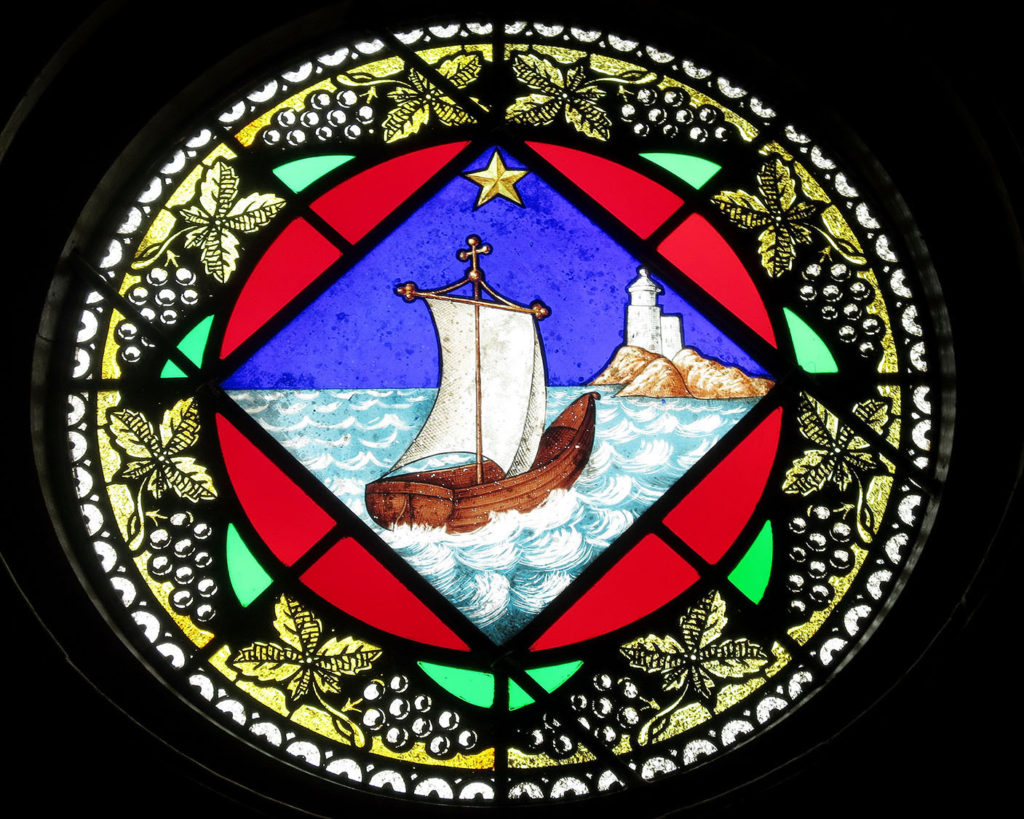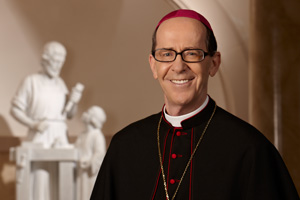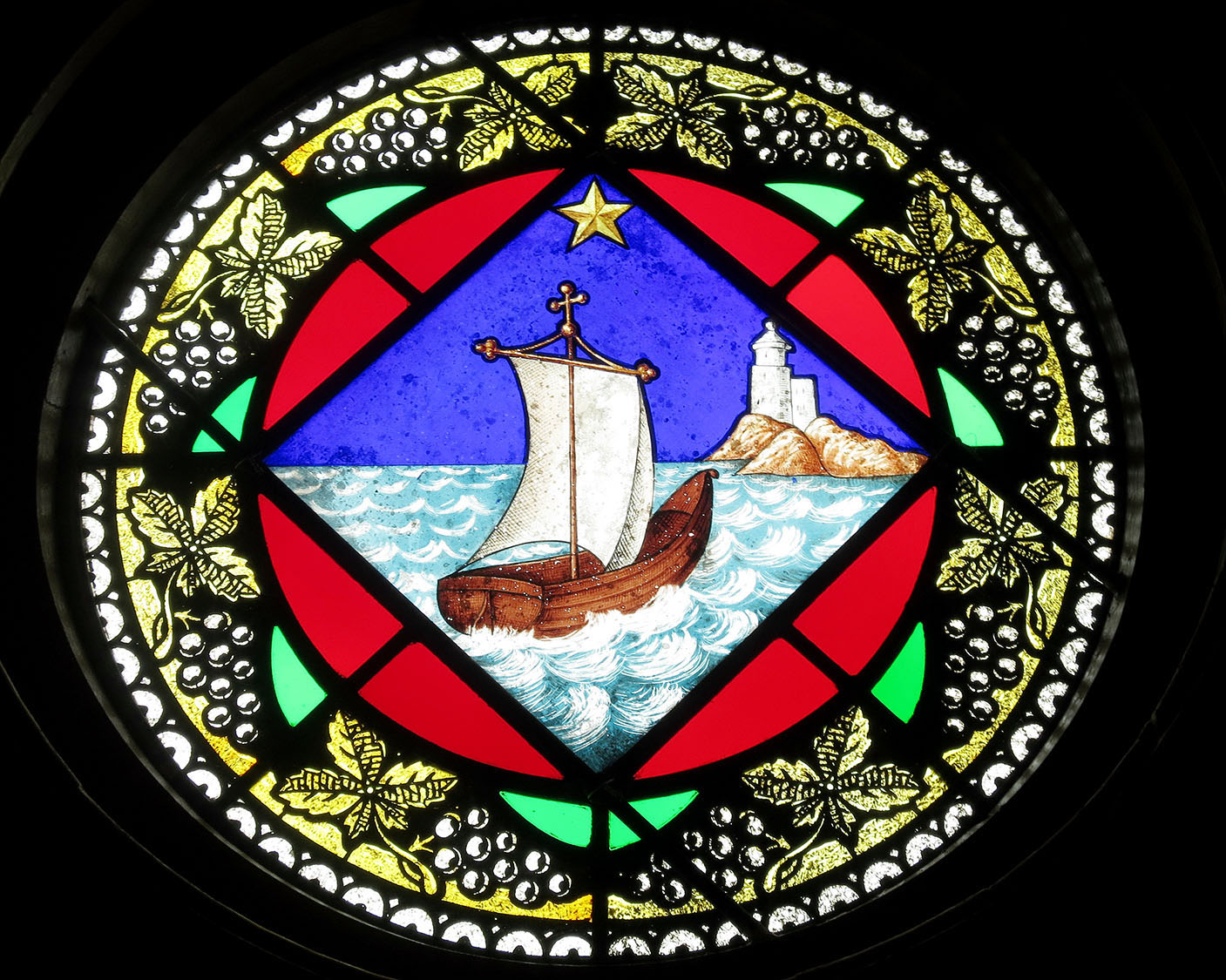
Holy Yet Needing Purification
Second in a Series
For centuries, the Church has been referred to as the “Barque of St. Peter” passing over the waters toward her heavenly destiny. It was in Peter’s boat that Jesus sat as He taught the crowds (Cf. Lk 5). The barque, or boat, was a place of danger in several instances when Jesus and His Apostles sailed on the Sea of Galilee. Sailors always need to be aware of storms at sea, especially of what would be called a perfect storm.
In my last column, I began to address the current scandals the Church has suffered due to the egregious behavior of certain priests over the past decades. For us as disciples of Jesus, it is important to face it squarely while remaining faithful to the Lord. Jesus knew full well that the Church would suffer the sins of her members throughout history, beginning with those of Judas and the other Apostles. When He established His Church, He promised that it would withstand the gates of hell. History has shown that the Church has endured other grave scandals over the centuries. In union with her Lord, we are most protected from storms of this world.
Today, let us consider some factors that contributed to the “perfect storm” in the culture and the Church over the past decades and that allowed for a setting where such evils could take place and not be dealt with in a swift and effective manner.
EN ESPAÑOL: ¿Que salió mal en la formación sacerdotal?
The Sexual Revolution

The Sexual Revolution led to changing attitudes toward human sexuality beginning in the middle of the last century and continuing to this day. This revolution promised “free love,” happiness and liberation from purported encumbrances of religion and tradition, particularly the Commandments. Church leaders, amidst these changes of thought and practice, though having the fullness of truth about the human person, failed to detect and address, with sufficient boldness, clarity and quickness, the lies that had crept into the culture. Sadly, the over-focus on sexual pleasure, the reducing and labeling of persons to their attractions (LGBTQ, etc.) and the viewing of persons as objects for pleasure have led to unprecedented numbers of infidelity, divorce, loneliness and abuse in the greater culture. The bitter fruit of such attitudes and acts surrounds us. Defense of sexual license, seen in recent laws like those passed in New York State, go so far as to permit the killing of a child up to the moment of birth.
Inadequate responses to this crisis, such as silence or harsh moralizing, have kept us from proclaiming God’s love in the face of a skewed understanding of the human person. An adequate response, however, did come from Pope St. John Paul II, who offered a deeper understanding of true love in what he called the Theology of the Body. It is a blessing to see deeper study of his Theology taking place now, study which proposes the good news of a greater call to love for which we are made by God.
Related to the general confusion about human love caused by the sexual revolution, we also suffered from an insufficient understanding of priestly celibacy. As Pope Francis recently stated, “celibacy is a gift to the Church” (Press Conference, Jan. 27, 2019). Indeed, in a world that believes that sexual pleasures must have free reign, even at the cost of innocent unborn children, there is need for those men and women who proclaim by their lives that ultimate love and fulfillment come from God and that self-mastery is certainly possible with God’s grace. Chaste celibacy, received as a gift of God and formed through spiritual and human direction, is a needed response to a false idea of “free love.”
Weak Seminaries and Theological Confusion
We see clearly now that Church leaders failed to adequately screen applicants for the priesthood during the confusion caused by the Sexual Revolution. In our seminaries, where young men are to be formed as true servants of Jesus and His Church, it was often assumed that the human and the spiritual qualities of the man were present and sufficient. This was a poor assumption, and it led to too little consideration of a man’s human virtues and of his relationship with Jesus Christ. As a result, some candidates unfit for ministry were accepted.
In the 1970s and ‘80s especially, many seminaries were places of dissent from orthodox teaching about Scripture, theology and especially sexual ethics. For example, the masculine spousal dimension in which a priest is called to love as Christ loved His Bride the Church (Cf. Eph 5) was not taught much at all. As a result, the priesthood was too frequently seen, not as a life of masculine love, but merely pertaining to certain ministerial functions. It was erroneously thought among some that the nature of the priesthood itself would change. Sadly, some seminaries became places with not only men who lacked a true calling from Jesus to the priesthood but even where a homosexual subculture sprang up. It is difficult to deny this problem considering the high percentage of abuse cases that occurred between men and post-pubescent boys.
Clericalism and Complacency
On several occasions, our Holy Father has stated that clericalism played a part in the current scandals as priests and bishops sought to cover up abuses. Disproportionate esteem for priests by the faithful, at times, was (and still can be) problematic. A priest is a man, a sinner redeemed by Christ, like everyone else; still, he is sent to serve, not to be served (Cf. Mk 10). He has a sacred calling as a custodian and minister of the Sacraments, especially Confession and the Eucharist, sacred mysteries essential for our salvation. Putting a priest on a pedestal not only fails to recognize his call to be a servant, but it can invite some to enter the priesthood for ulterior motives such as a “comfortable life.” Nothing could be farther from Jesus’ intentions for His priesthood.
One should enter the priesthood through a calling from Jesus to share in His mission. That mission is to proclaim Christ Crucified and Risen from the dead. Especially in this country, Church leaders have been slow to embrace this mission and settled for simply maintaining her membership rather than boldly evangelizing the culture. Instead of being Catholic out of conviction and a deep relationship with Jesus, the faith has become for too many something merely cultural. Some may say that they are Catholic because they are Irish or Mexican, rather than because they know Jesus Christ personally and that they love Him as their Savior and Lord. As Archbishop José H. Gómez of Los Angeles said, “Jesus Christ did not come to suffer and die so that He could make ‘cultural Catholics’” (“Evangelization, Education, and the Hispanic Catholic Future”). Such a faith lacks true conviction to follow Jesus when His teachings differ from ways of the culture.
Pope St. John Paul II, convinced that the answer to these scandals is great fidelity, said, “I sense that the moment has come to commit all of the Church’s energies to a new evangelization and to the mission ad gentes. No believer in Christ, no institution of the Church can avoid this supreme duty: to proclaim Christ to all peoples” (Redemptoris Missio 3).
While I could mention more things that went wrong in priestly formation, I will stop with these. Thankfully, many of these concerns are now being addressed well; I will write more about these in future columns. Like other times of storms in the Church, Jesus continues to renew His Mystical Body through holiness. You and I are called to be saints.
Just as with the storms experienced by the Apostles, it is Jesus who calms them as He likewise calms our hearts and reminds us to trust in Him.







